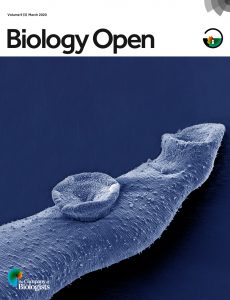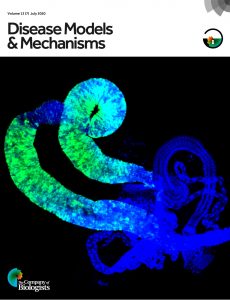20 October 2020 (last updated 18 May 2021)
There has been a profound change in the scholarly communication landscape over the past two decades, with a profusion of new publishing and subscription models from commercial and not-for-profit publishers. The increasing importance of Open Access (OA) – making research immediately and freely available to all – has presented challenges as well as opportunities to libraries, funding organisations, publishers and authors alike.
S ome fields within the biological, biomedical and life sciences have welcomed OA publishing for many years, while others are approaching it more slowly. Similarly, OA is essential for an increasing number of authors because their funder or institution mandates some form of OA, while for others it is less of a consideration. One thing is certain however – OA will continue to play an important role in the future of publishing. To celebrate Open Access Week 2020, we wanted to share our OA story.
ome fields within the biological, biomedical and life sciences have welcomed OA publishing for many years, while others are approaching it more slowly. Similarly, OA is essential for an increasing number of authors because their funder or institution mandates some form of OA, while for others it is less of a consideration. One thing is certain however – OA will continue to play an important role in the future of publishing. To celebrate Open Access Week 2020, we wanted to share our OA story.
The Company of Biologists’ OA journey started 16 years ago. We believe OA is very important to the advancement of science and, over the past year in particular, we have taken big steps to ensure the transition is smooth, transparent and sustainable for all.
We’re supporting OA via three main routes:
- High quality Open Access publishing
- Read & Publish agreements with libraries and library consortia
- Our commitment to the Transformative Journal approach
High quality Open Access publishing
We have participated in OA since 2004 because we believe OA publishing is good for science as it leads to wider dissemination, higher readership of articles, content reuse, and an acceleration in the sharing of quality research.
As a not-for-profit organisation, the surplus we receive from publishing directly benefits the biological community as we use it to host events, provide travel grants and fund societies. In 2004, we evolved our subscription journals – Development, Journal of Cell Science and Journal of Experimental Biology – into hybrid journals. This enabled us to maintain subscription revenue at a time when OA as a business model was unsustainable, because publication costs far exceeded income from article processing charges (APCs).


The hybrid model, where authors have the option of publishing their articles Green OA (free to read after 6 months) or Gold OA (free to read immediately), was our first step towards exploring the publication of our journals as fully OA. Fast forward seven years and in 2011, we launched Biology Open, our first born-OA journal. Disease Models & Mechanisms also made the switch to become fully OA that same year.
We apply the same high standards to all of our articles, whether OA or not. And, as OA continues to evolve, our journals will remain a source of reliable, quality research in the life sciences.
Read & Publish agreements with libraries and library consortia

Navigating the transition to fully OA publishing has not been straightforward. “It has been a challenge to find a way to transition to fully OA whilst maintaining financial stability” said Professor Matthew Freeman, Head of the Dunn School of Pathology, University of Oxford, and Chairman of The Company of Biologists. “Not every biologist has access to funds for APCs and there has also been much discussion and debate about what the best mechanisms are to promote OA fairly.”
Following a great deal of consultation and collaboration with other not-for-profit publishers, libraries and funding organisations, we launched our cost-neutral Read & Publish (R&P) OA initiative in November 2019.
Our R&P agreements enable corresponding authors at participating institutions to benefit from free and unlimited OA publishing of research articles, and unlimited access to Development, Journal of Cell Science and Journal of Experimental Biology, including archive content dating back to 1853. R&P agreements also support institutions and authors working to meet funding requirements and to make OA the default publishing choice.
We were one of the first not-for-profit publishers to offer R&P agreements, and, in the just over a year, we have signed R&P agreements with three library consortia – Jisc (UK), MALMAD (Israel) and IReL (Ireland) – as well as with individual institutions.
In addition we are piloting variations of our standard Read & Publish model with the Max Planck Digital Library and the University of California. These agreements also include our fully Open Access journals – Disease Models & Mechanisms and Biology Open.
“University of California couldn’t be more delighted to partner with The Company of Biologists on an Open Access agreement,” said Ivy Anderson, Associate Executive Director of UC’s California Digital Library. “As a leading scientist-led non-profit publisher of high-quality journals that shares our mission of transitioning the research literature to Open Access, The Company of Biologists is an important and valued outlet for UC authors. We appreciate their willingness to instantiate UC’s shared funding model and are pleased to partner with them on their first large-scale Open Access agreement in the United States.”
“The Company of Biologists is one of a small group of not-for-profit publishers who are working hard to push the open access agenda forward,” said Kathryn Spiller, formerly licensing manager at Jisc.
Jack Hyland, IReL Manager, said “Our Read & Publish agreement with The Company of Biologists provides our corresponding authors with immediate Open Access publishing without them needing to pay article processing charges. The agreement also enables students and researchers to have access to additional journals previously unavailable to them.”
Researchers at over 200 institutions in 17 countries are already reaping the benefits.
“I was delighted to have our paper published Open Access for free in Development,” said Professor Talila Volk, Weizmann Institute of Science, Israel. “This is due to a special Read & Publish deal between my research institute and The Company of Biologists. Publishing Open Access exposes my article to a wide variety of readers who do not have access to the journal.”

Professor Sally Lowell, Professor of Stem Cell Biology and Early Development at the University of Edinburgh, discovered the benefits of the R&P agreement when her article was accepted. “I’d heard of Read & Publish deals and knew that many universities, including mine, had signed up to them but I had not previously understood the benefits that these deals bring to authors who work at those universities,” she said. “I was delighted that our paper was accepted for publication in Development, and the cherry on the cake was learning that our paper would be published Open Access for zero pounds and zero pence without me having to do anything.”
This feedback from our authors, as well as further author testimonies, supports what we have seen ourselves over the past year. For journals where OA publishing has historically been too expensive for researchers due to a lack of funding, R&P agreements have already led to an increase in accepted OA articles. And articles published as a result of R&P deals across all three of our hybrid journals represent 24% of all OA articles accepted so far this year.
Commitment to the Transformative Journal approach
The successful uptake of our R&P agreements gave us the confidence to commit to the ‘transformative’ route towards Open Access. We were the first not-for-profit publisher to commit to this approach, and our three hybrid journals were the first journals to be afforded Transformative Journal status by Plan S.
The Transformative Journal strategy signals our commitment to move towards full OA, while allowing us to provide publishing options that support all our authors as we approach this change in the publishing landscape.
Development, Journal of Cell Science and Journal of Experimental Biology – as Transformative Journals – will continue to offer three publication choices – free non-OA publishing, Gold OA (author pays), and free OA publishing through R&P agreements. This means that researchers can continue to publish with us regardless of their funder or financial status.
“I am delighted that The Company of Biologists is fully committed to transitioning its journals to full Open Access – as evidenced by the Read and Publish arrangements developed last year and the announcement that their three subscription journals will become Transformative Journals, from January 2021,” said Robert Kiley, Head of Open Research at Wellcome. “We welcome the commitment to transition to full Open Access, to offset subscription income from payments for publishing services and to work to increase the share of OA content, year-on-year. I hope other journals follow the lead set by The Company of Biologists.”
We have come a long way over the past 16 years, and our community remains at the heart of our publishing decisions. Whatever the future of publishing may hold, you can rest assured that The Company of Biologists and its journals will remain committed to supporting our authors, reviewers, readers and library partners.








You must be logged in to post a comment.